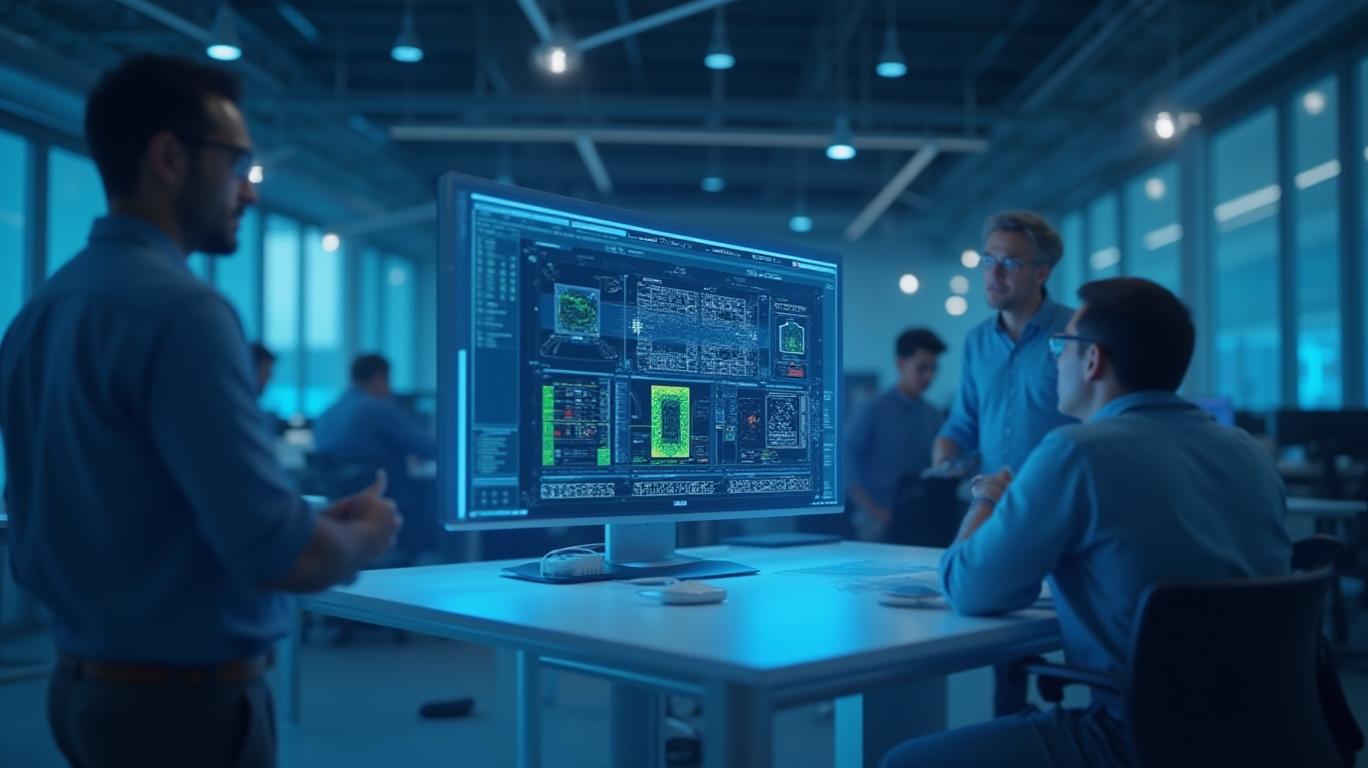Cadence Design Systems Soars to New Heights in Q1 2025: AI Innovation Fuels Explosive Growth
Cadence Design Systems (CDNS) delivered a standout performance in its Q1 2025 earnings report, marking a new chapter in its trajectory as a leader in electronic design automation (EDA) and semiconductor IP. With revenue surging 23% year-over-year to $1.242 billion, the company not only exceeded its own guidance but also underscored the transformative role of artificial intelligence (AI) in its product portfolio. Let’s dissect the numbers behind this milestone and what they mean for investors.

The Revenue Engine: AI and Diversification Power Growth
Cadence’s revenue growth was remarkably broad-based, with each segment contributing to the surge. The Semiconductor IP segment led the charge, growing 40% YoY, fueled by demand for AI chips, chiplet architectures, and expanding foundry partnerships. This segment’s success reflects the global shift toward advanced semiconductor designs, where Cadence’s IP libraries and design tools are indispensable.
In Core EDA, revenue rose 16% YoY, driven by the adoption of AI-powered tools like the Cerebrus platform, which now has over 1,000 tapeouts and nearly 50 new customers in Q1 alone. These tools enable faster, more efficient chip design cycles—a critical advantage as companies race to develop AI hardware. Meanwhile, System Design and Analysis revenue skyrocketed over 50% YoY, benefiting from Cadence’s physics-based simulation solutions and AI-driven optimization tools, which are in demand across automotive, industrial, and hyperscale computing markets.
Backlog and Guidance: Betting on Sustained Demand
Cadence’s $6.4 billion backlog at quarter-end—nearly double its cRPO of $3.2 billion for the next 12 months—paints a bullish picture for the rest of 2025. The company raised its full-year revenue outlook to $5.15–5.23 billion, up from prior guidance, and expects Non-GAAP EPS to reach $6.73–6.83, reflecting operational efficiency gains. This confidence is bolstered by a $2.78 billion cash balance and free cash flow margins of 37.3%, up from 29.8% a year ago, signaling strong capital discipline.
Key Drivers: AI, Customer Resilience, and Global Reach
The CEO highlighted AI-driven innovation as the linchpin of Cadence’s strategy, with collaborations like NVIDIA’s Grace Blackwell architecture showcasing the company’s ability to stay ahead of industry trends. Management emphasized that customers—particularly in hyperscale computing and automotive—are not cutting R&D spending, even amid macroeconomic uncertainty. This resilience is underpinned by Cadence’s recurring revenue model, where software licenses and subscriptions provide steady cash flows.
Geographically, Cadence maintained a balanced revenue mix, with the Americas contributing 48% of Q1 revenue, followed by Asia (30%) and other regions. Notably, China’s contribution dipped to 11%, a trend likely tied to geopolitical tensions, but Cadence’s focus on IP and EDA tools—critical for advanced chip design—positions it to capture opportunities in emerging markets.
Risks on the Horizon, but Momentum Remains
While geopolitical risks and supply chain constraints loom, Cadence’s raised guidance suggests management believes these challenges are manageable. The company’s record backlog and partnerships with industry leaders like NVIDIA and top hyperscalers provide a buffer against short-term volatility.
Conclusion: A Leader in the AI-Driven Semiconductor Revolution
Cadence’s Q1 results are a testament to its strategic pivot toward AI and its ability to capitalize on secular trends in semiconductor innovation. With revenue growth spanning all segments, a backlog that ensures visibility through 2025, and a 37.3% free cash flow margin—up from 29.8% in Q1 2024—the company is well-positioned to outperform in an increasingly AI-centric world.
Investors should take note of the $3.2 billion cRPO, which alone represents nearly 62% of the new revenue guidance midpoint. Combined with Cadence’s expanding ecosystem of hyperscalers and foundries, this positions the stock as a prime play on the AI hardware boom. While geopolitical risks persist, the company’s diversified customer base and recurring revenue streams mitigate downside. For now, Cadence’s fundamentals are firing on all cylinders—a signal that this EDA giant is just getting started.

Comments
No comments yet